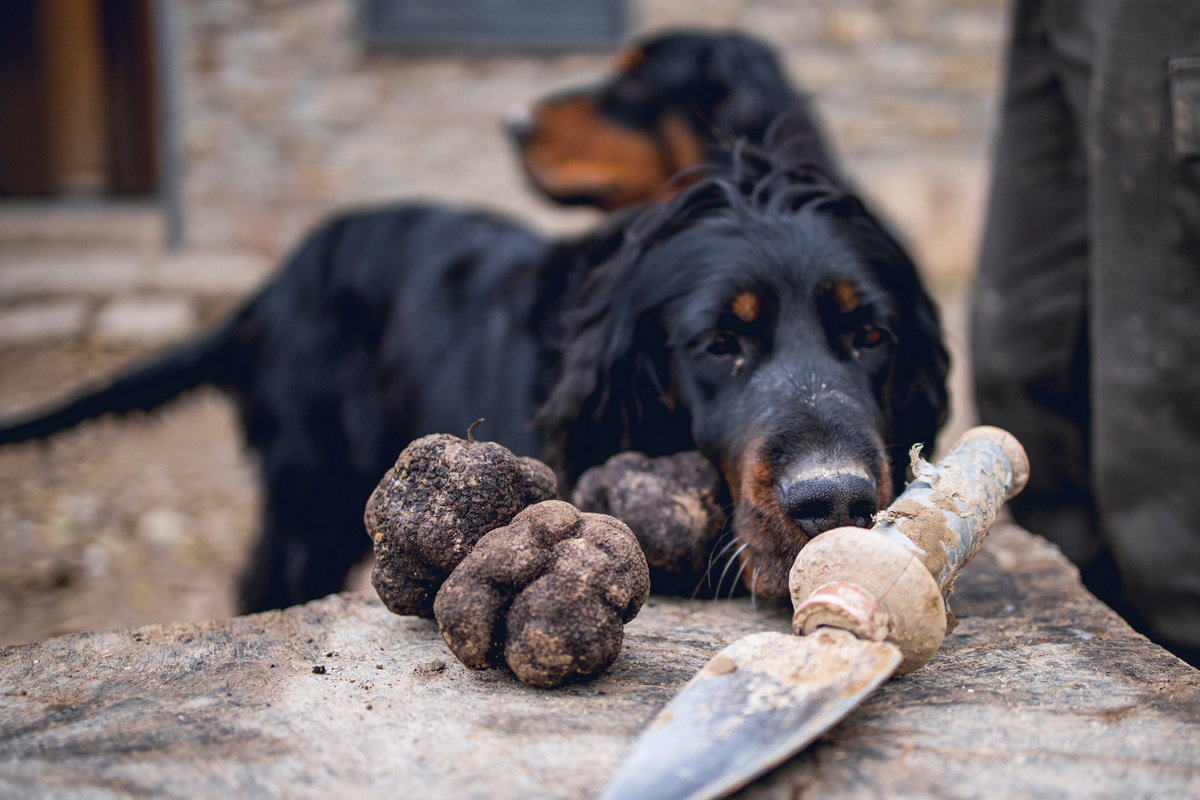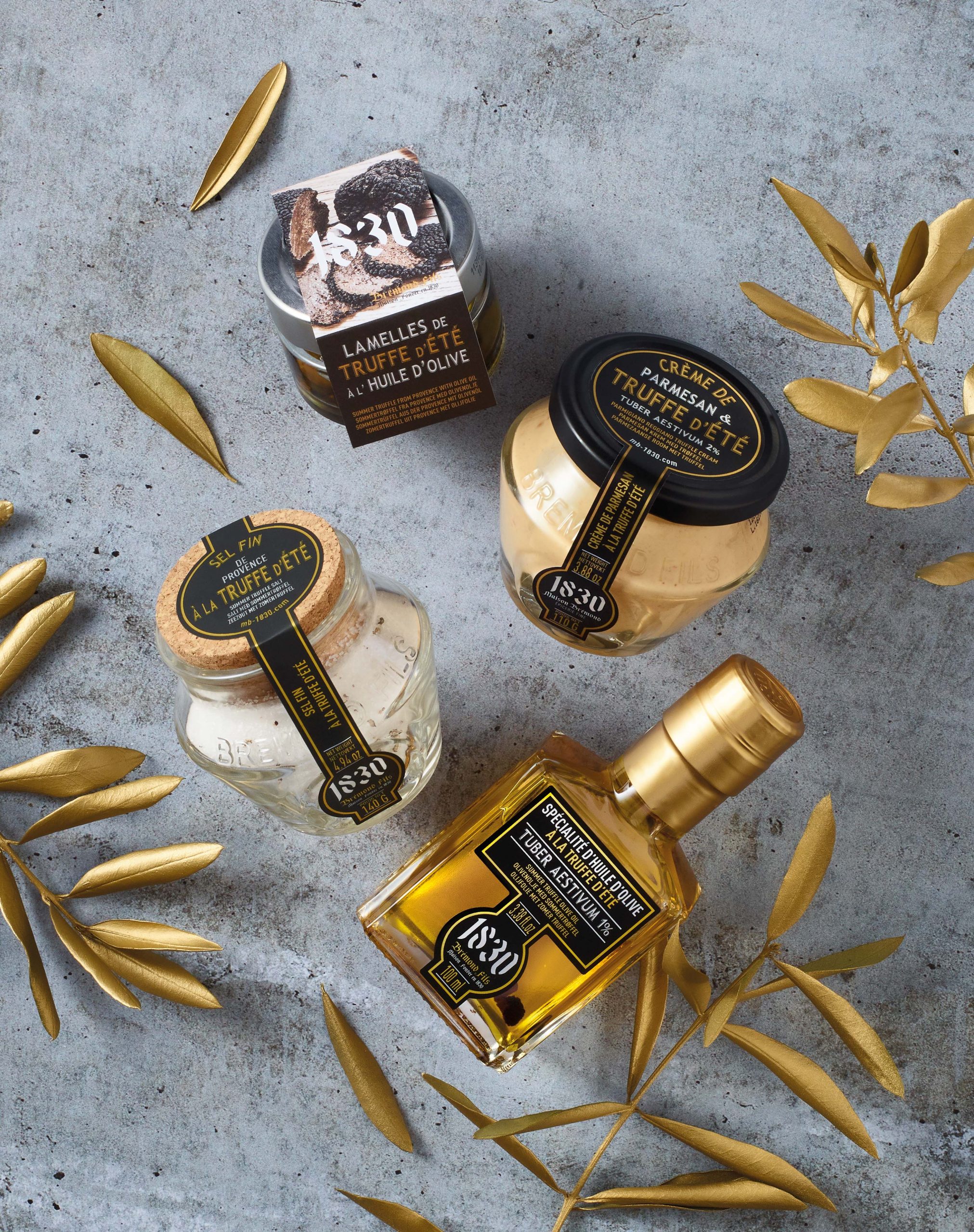Moulin Baptiste - The truffle of Provence
It is in Morière-lès-Avignon that Philipe Duclaux has set up his laboratories for the manufacture and production of typically Provencal recipes.
The establishment is divided into several workshops where flavoured oils, vinegars, fruit pulps, tapenades, mustards, sauces, etc. are produced. However, there is a very special area, called the “Zone des Petites Mains” (Little Hands Area), which focuses exclusively on one product from the Provençal region: the black truffle or Tuber melanosporum, but also the Tuber aestivum or Summer truffle.

Philippe Duclaux
For several years, Maison Brémond 1830 has trusted Philippe Duclaux to create and produce recipes using this noble mushroom. It is in the heart of the Moulin de Baptiste, in a non-mechanised room – the product requiring delicate and careful handling – that the truffles are selected to be used in preparations as varied as extra virgin olive oil flavoured with black truffle, pesto, mustard, olive pulp or even parmesan cream.

The truffle
The truffle is a mushroom that is invisible on the surface. Its presence is dependent on so many factors that its production and regularity vary from one year to the next. It is therefore rare and precious. The mushroom is said to be hypogeous, i.e. it lives underground, and is saprophytic, i.e. it feeds on the decomposition of organic plant matter. Truffles do not grow just anywhere, they grow at the feet of certain oaks, whose roots are mycorrhized. The oak tree lives in symbiosis with the mushroom. The tree provides the fungus with hydrocarbon substances, and in exchange, the fungus feeds the tree with mineral elements.
Did you know that? Other than oaks, truffles also like hazelnut trees and sometimes even olive trees!
In Provence, two varieties of truffles are cultivated. The noblest, tastiest and most expensive: the black truffle, or “Tuber Melanosporum”. The other variety, the white summer truffle, more subtle, lighter, also called “Tuber Aestivum”. The aromas of the winter truffle are more powerful than those of the summer truffle. The “rabasse”, the Provençal name for the truffle, is harvested from the end of November to March, hence the name “winter truffle”. The white summer truffle is harvested from May to August, September if the rains have been generous. Both grow in the same truffle fields.
How do you find truffles?

The search for the black truffle is called cavage. In the past, pigs were used to search for these precious mushrooms, but nowadays dogs are used more often, as they have a more reliable truffle and better endurance!

The search for the black truffle is called cavage. In the past, pigs were used to search for these precious mushrooms, but nowadays dogs are used more often, as they have a more reliable truffle and better endurance!
If truffle cultivation was flourishing at the beginning of the 20th century, approaching 1600 tons, since the beginning of the 21st century, production has fluctuated, on average, around 50 tons. This decline can be explained by rural desertification, changes in land use, the fragmentation of rural landscapes and also climatic changes: the truffle needs water and humidity to develop, and successive droughts and heatwaves work against the richness of the soil in this area.
Provence is still the leading truffle-producing region in France. It is known that 80% of the French production of tuber melanosporum is “raised” under the roots of oaks that have seen the sun rise between Ventoux and Luberon. There are about 3,000 of them who exploit the vein, some by tradition, others by profession, all with passion.

Truffle products
Truffles can be enjoyed in all their forms to enhance the simplest of dishes. With a duck breast, in an omelette, in rice or pasta, let yourself be seduced by this treasure of the earth through our exceptional products.
